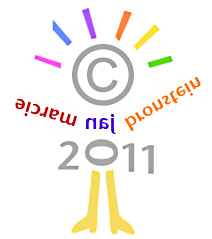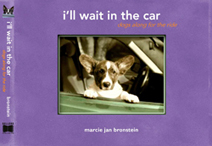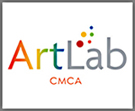a teen’s vision : filmmaker john loxterkamp
Posted: 11/11/2011 Filed under: art, artists, inspiration | Tags: artists, drawing, vision 5 Comments
For the past 16 years, I’ve lived with my family in a small town on the coast of Maine. Our community is filled with quirky, independent-minded, rather remarkable people, and my son (now 18 years old) is lucky to have grown up here, with these folks and their children as an extended family. One of those children is now also a high school senior, preparing to move to college, and out into the world. I’d like to introduce you to John Loxterkamp, who, as you will soon see, has a unique sense of visual style and wit, and a sophisticated ear for editing. What are the origins of John’s artistic vision? How did his early drawing skills inform his current work with video and typography?
When John was an eight year old child, I was struck by his highly stylized drawings. As I’ve written before, all children make remarkable things, and many make remarkable drawings. But there are children who are working at another level that really takes your breath away. Perhaps the most striking aspect of John’s work was his way of creating a sense of the passage of time… a rendering of cause and effect. This is no small thing, especially in a child’s work:
At some point, around the age of nine, John turned to video. He and my son made and edited movies for hours and hours, animating many an inanimate object:
From that point on, John made film after film, and at a certain point, his sensitivity as an editor and his innovative use of graphics came to the fore. The lyric video below was created by him this summer. Enjoy this excellent creation, and read through to the bottom of the post for my interview with John Loxterkamp.
Your drawings were always distinctive. Have you drawn continuously since you were a child, or have there been times when you’ve taken a break?
I’ve been drawing for as long as I can remember, and there have been slow periods where I haven’t drawn as much or as frequently, but I can’t remember ever taking a break from it completely.
What do you love about the video/film medium?
What I love most about film as a medium is that it allows one to tell a story with unlimited methods of doing so, through shots, scores, how the video is edited, etc. I also love the problem-solving aspect of film making. Throughout my history of videography, there’s always been a point during either production or post production where something doesn’t work, either continuity-wise or sound-wise or shot-wise. It is the duty of the filmmaker, especially one who is in charge of most of the aspects of production, to somehow solve or alleviate whatever problem it is. There are several ways of getting to a point where you’re satisfied with the final product and the imperfections are negligible. There’s no specific reason film is my medium of choice, except that I feel a strong passion for it and I am motivated to create short videos frequently, I do it for fun.
Tell us a bit about your Max video. What do you remember about the process of making of it?
Max, as far as I can remember, was a very short stop motion feature Noah and I made for fun; we always created when spending time together, and in this case we had a camera and a lot of time. Though the video was short, only about 6 seconds of stop motion total, I remember there was speculation about how many frames each picture we took should last on screen. At the time, I was all about the fluidity of motion and the final presentation, and suggested that if we made all of the pictures 3 frames long, the video would flow rather than assume a more choppy feel with the more standard 8-frames-per-photo look. It was also challenging to move everything in the shot around with relation to everything else, sometimes we would find ourselves confused as to what we had moved since the last frame and what we hadn’t. In the end, I’d say it was one of our more successful stop motion productions.
Which artists/filmmakers inspire you?
I’ve always been a fan of Wes Anderson. The way he sets up his shots as a Director is very unusual and captivating, and I’ve taken much from his use of lengthy still wide shots.
I know that you’ve found, through the internet, quite an extensive community of other teens making films. How do you think the immediate feedback (likes, repostings, votes) affects your work?
I really learn a lot from how others receive my work, and I learn to deal with the negative feedback I receive. I always pay attention to and encourage the posting of comments on my video because I really feel that constructive criticism from those who scrutinize my work will help me in the long run to improve my craft. I’ve learned some techniques from those making films around me, but I’ve never shaped a video of mine around a fellow content creator’s style.
Tell us about your fabulous Nashville Lyric Video.
Nashville was my first full lyric video, although I had been working with typography and music before. The main thing I learned from working on Nashville was how to budget my time and meet a deadline. Because the video was a commission, the artist’s manager gave me about a three-week period to complete the lyric video, and that turned out to be a very short amount of time. I was working 6 or 7 hours straight some weekends putting the video together, and I had to prioritize; I would stay in rather than hang out with my friends some nights, and I would close out all other distractions to get the project done. It was a learning experience, I’ve never had to do something so time-consuming and intensive.
What are you working on these days? Are you open to taking commissions?!
Right now I’m starting to get back into film, but I have one typography project I’m working on at the moment, which will probably take me about a month to complete. I am always open to commissions!
BRAVO JOHN!
BIG inspiration : BIG magazine
Posted: 10/29/2011 Filed under: artists, children, collaboration, inspiration, press | Tags: artists, collaboration, inspiration, vision Leave a commentA big thank you to Jo Pollitt and Lilly Blue, the creative team behind BIG Magazine, for featuring my work and this Playground on their fabulous blog! If you haven’t yet read (or read about) BIG Kids Magazine you’re in for an inspiring surprise. BIG is an Australian-made biannual contemporary creative arts magazine/blog devoted to promoting creativity and innovative collaboration between and amongst artists and children. Each issue of the magazine features a free artist’s print and two key projects: Side By Side which publishes collaborative artwork by children and artists, and The Child Artist Response Project which is an initiative where children and artists respond directly to each other’s work. You can subscribe to BIG here, like them on their Facebook page here, and, you can submit your child’s artwork to BIG as well!
Bravo BIG!
a child’s vision : eliot bee
Posted: 10/27/2011 Filed under: artists, children, inspiration, mixed media | Tags: artists, inspiration, mixed media, vision 1 CommentIt’s not unusual for a child to make wondrous, unique creations. (All children do.) But it’s rare for a child to make a collection of works that evolve into a cohesive series. Eliot Bee is a five year old girl who has been creating “fairies” out of found objects since before the age of four. In Eliot’s words: I use materials that I find when I’m walking around, or toys I’m not using anymore. I use wooden bodies a lot, but sometimes I use other stuff. I made one from a penny and my daddy’s guitar pick. (See image above.)
I’ve had the great pleasure of working with Eliot many times at the Starrett Center, a wonderful multi-age daycare center in my town. While I’ve never made fairies with her, I’ve watched her approach every other project with the same clear sense of focus and inner direction; a total connection to the materials and the process of creating images or objects.
Eliot began making her fairies at Starrett with her teacher Linda Stec (who is the Executive Director of the Center, as well as a funky and fascinating ceramic artist/puppeteer). It began without fanfare one day, when, not wanting or needing to sleep at nap time, Eliot simply asked: Can I make a fairy? Linda gathered some materials and heated up a hot glue gun.

Then every day like clockwork, for many days and weeks and months thereafter, Eliot made fairies while Linda assisted. Linda’s words to her from the outset were: You’re the artist. I’m just the gluer.
Eliot continued making fairies at home, with her Mom and her Dad. No matter where she worked, the adults were there solely as assistants, ready with a glue gun, but without “suggestions” or directions.
When I first saw Eliot’s collection (months before her one-person show at Waterfall Arts in Belfast last year), I was moved not only by the works themselves, but by the sense that this completely personal work was born of an open environment, where a child’s vision was given infinite space to grow.
{ Many thanks to Eliot’s father, Ethan Andrews, for the photographs in this post. }
art hero : roy decarava
Posted: 10/25/2011 Filed under: artists, books, inspiration, photography | Tags: artists, books, photography, vision Leave a commentRoy DeCarava was one of my first art heroes, and the first photo-based artist whose images opened my eyes to photography’s uniquely poetic power. This is probably the most important book in my photo library, and it has been with me for almost thirty years. DeCarava’s images placed an early, indelible stamp on my sensibilities. And as with all great art, I was physically affected by these works: they took my breath away; they made me shiver. And then, they raised my proverbial bar.
I can’t think of many other images that move me the way this image does. It’s an image that I carry around inside of me as a gauge for timelessness. DeCarava himself said: My pictures are immediate and yet at the same time they’re forever. They present a moment so profoundly a moment that it becomes eternity. It’s almost like physics; there’s an arc of being. There’s a beginning, then the peak is reached and then there’s the end… The moment when all the forces fuse, when all is in equilibrium, that’s the eternal…
Roy DeCarava showed me how personal image-making could be. How emotional. How quiet and strong and clear and communicative, all at the same time. How poignant.
His images taught me about framing space. They taught me that each photograph must emanate its own, extraordinary sense of light.
His images taught me about graciousness. How to align yourself with the rhythm of your subject.
The only way to do this is to be in tune… he said… to have the same sense of time that the subject has. This means you have to give yourself to the subject, accept their sense of time.
In 1987 DeCarava came to speak about his work at Hampshire College, where I was completing my degree in film/photography. As the slide show of his work was presented, he sat in the front row, watching along with his audience. When the presentation of images ended and the questions began, he did not quite turn all the way around. He answered our questions, speaking partly to himself, partly to the images that lingered, still, in front of the room. It was as if he were entranced by his own work.
freefall : the infinite box project
Posted: 10/21/2011 Filed under: art, artists, books, classes, inspiration | Tags: artists, books, inspiration, mixed media, prompts Leave a commentTomorrow’s daylong workshop at the Center for Maine Contemporary Art is entitled “Shake Up Your Art” for good reason. Adults who are “trying” to make art need shaking up. And what better way to upend stiff, ingrained art-making habits then drawing with crayons? Or inverting the painting you’re making (that you think is so great) so that you can more clearly see what it may be, instead of what you believe it to be? It may sound like the Anything Goes approach to leading a workshop, but there is a method to my madness. A few years ago I read Natalie Goldberg’s seminal work, Writing Down the Bones, which refines and crystallizes the idea of a “writing practice.” In essence, Goldberg encourages writers to “keep your hand moving, lose control, and don’t think.” These ideas, in combination with a her brilliant illumination of the Zen concept of First Thoughts culminated in what is easily one of the most popular books ever written about writing.
At the time of reading Writing Down the Bones, I was looking for a new way to begin my mornings, a way to immediately, without a formal idea or plan, immerse myself in color and shape and form. I honestly can’t remember precisely how I then began making boxes, but I can tell you that like most things that we dive into with curiosity and no expectations, it bloomed into something special.
I created my boxes from squares of foamcore (I have loads of it in my studio because I frame my own photographs), and then approached them with no idea or intent, other than to make a mark, and then respond, with color, shape, line, pattern or texture. These intuitive, spontaneous, unedited, un-erased marks evolved into a unique, free-flowing visual dialogue.
I found that making boxes placed me in a deep state of beginner’s mind, where I was so fully present, that I had no sense of the direction in which a box might move. If only I could step out of my own way, especially when a box seemed to be going in a particular direction, it might become what it wanted to be, as in the box below, which unfortunately seemed to be moving toward a literal writing practice/chakra symbol thing:
Until my very upset friend called me, and we spoke for a long time about the complicated crisis she was navigating. When I returned to my box, I completed it for her, and entitled it My Friend is Having an Awakening.
My collection of boxes grew and grew, and the completion of each one only inspired me to create another. This one is called Flow:
And this is called Lower East Side:
At a certain point I began to use them in my workshops and I immediately saw that I wasn’t alone in feeling captivated by the white box as a canvas.
So tomorrow afternoon, after coloring with crayons and making paintings alone and as a group, and after making collages and drawings prompted by words, the participants in my workshop will be given their own small, white, empty, six-sided box.































